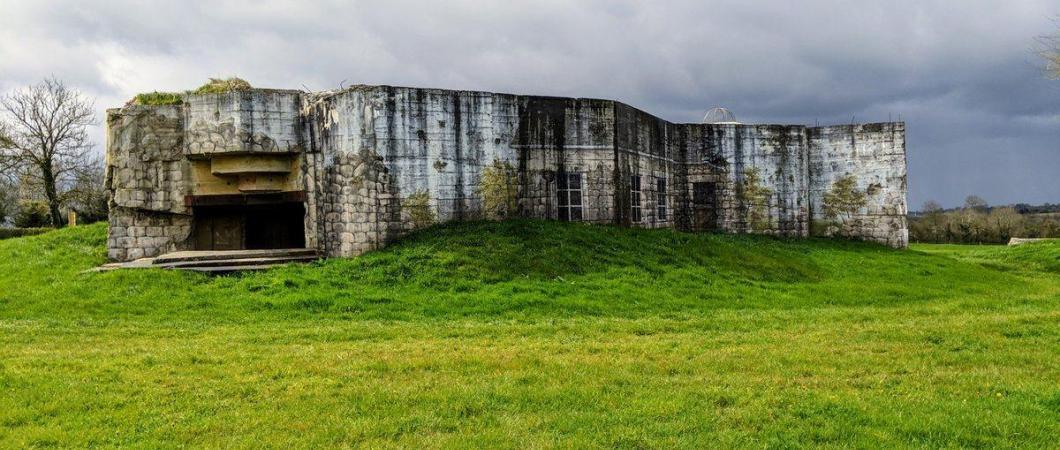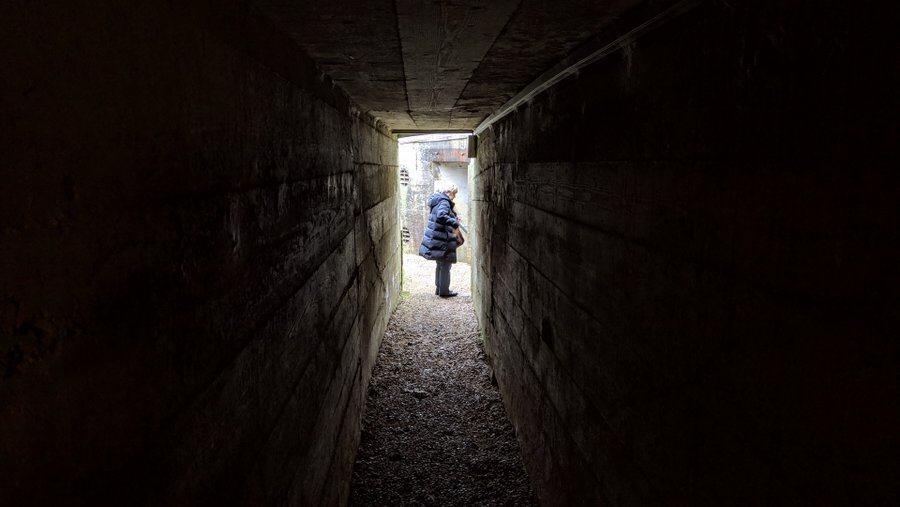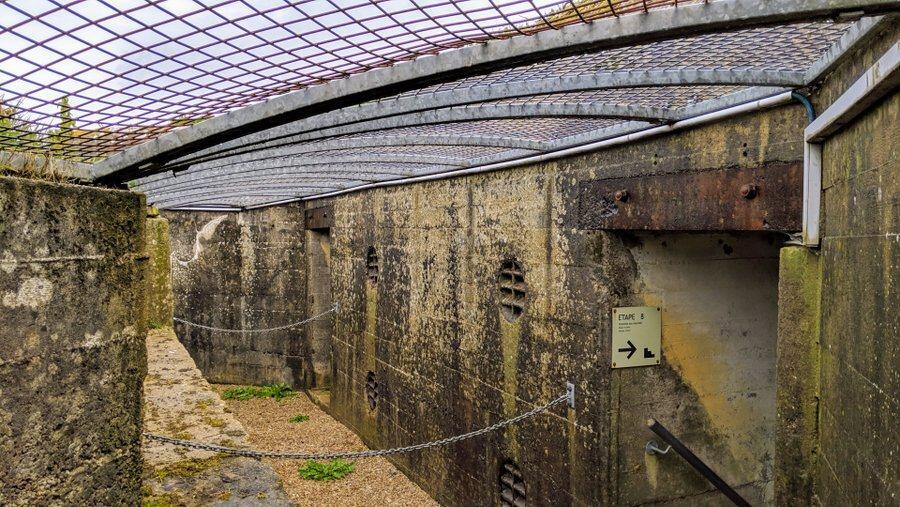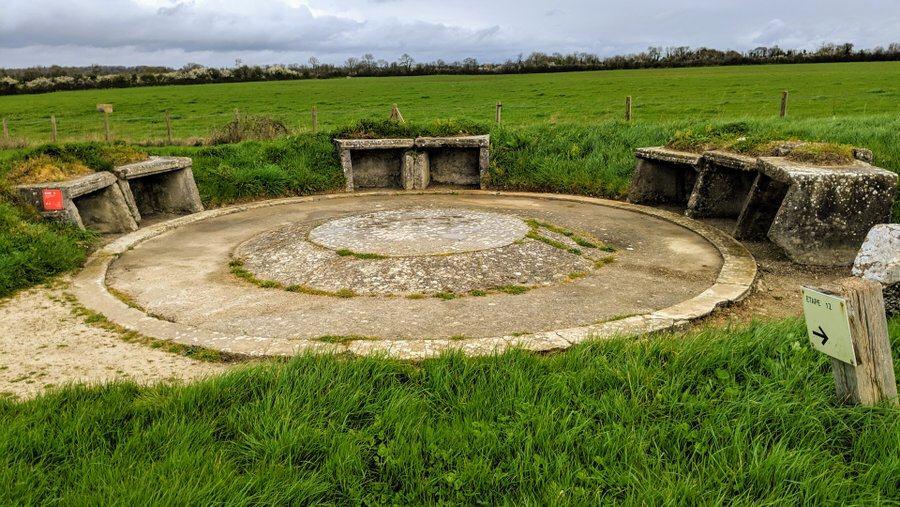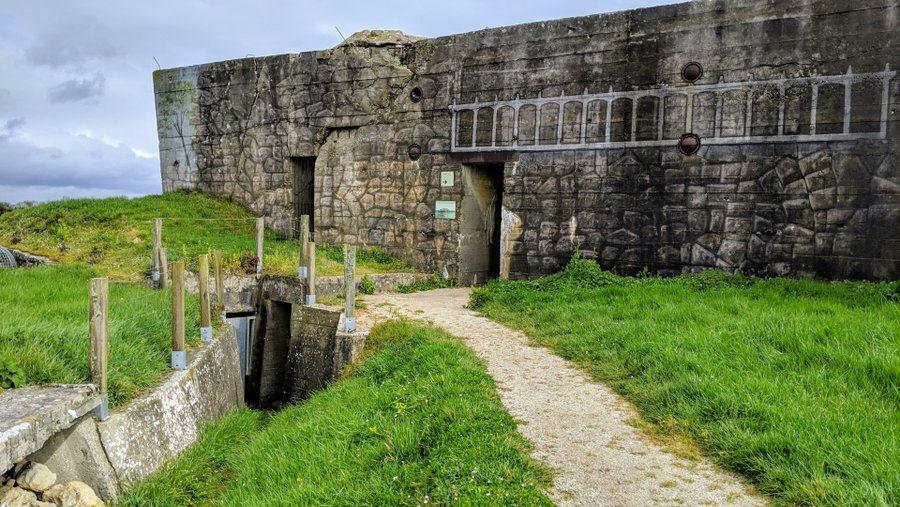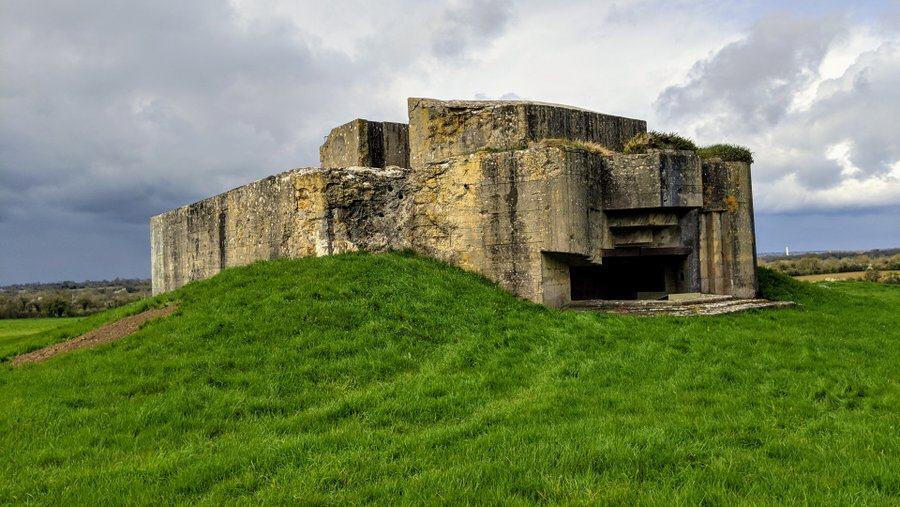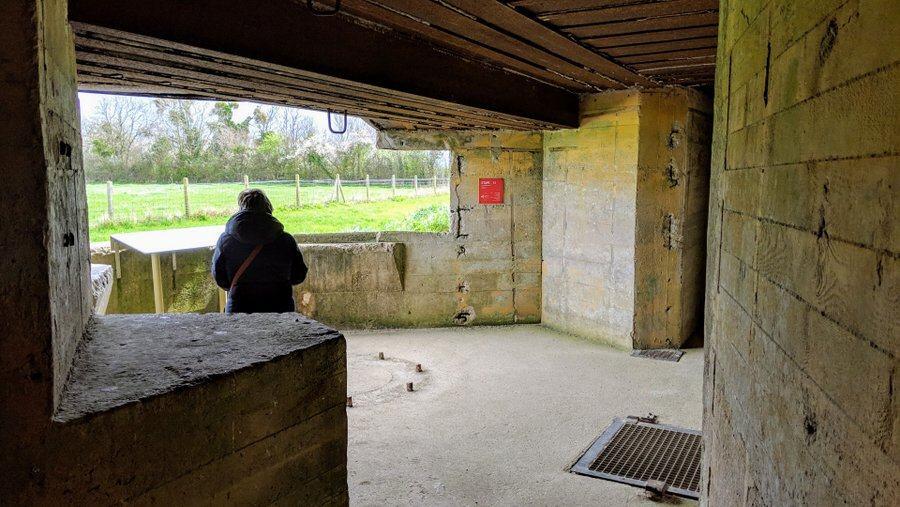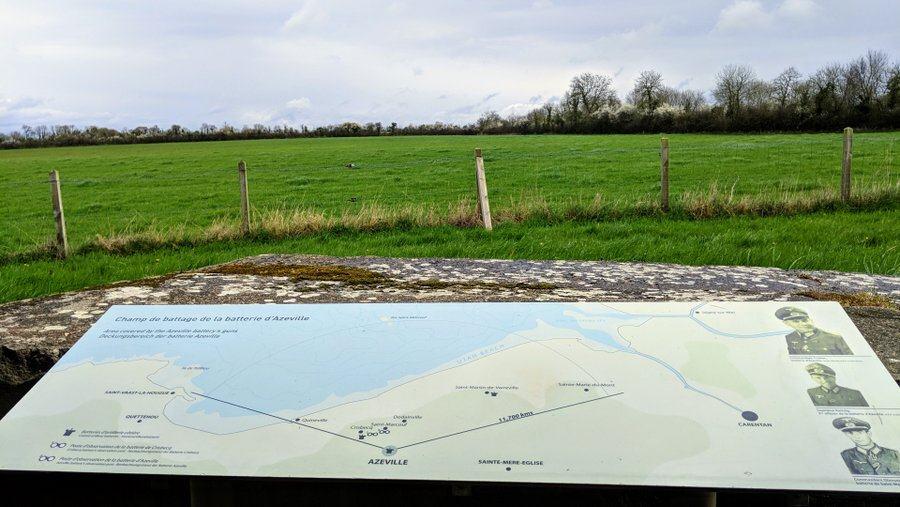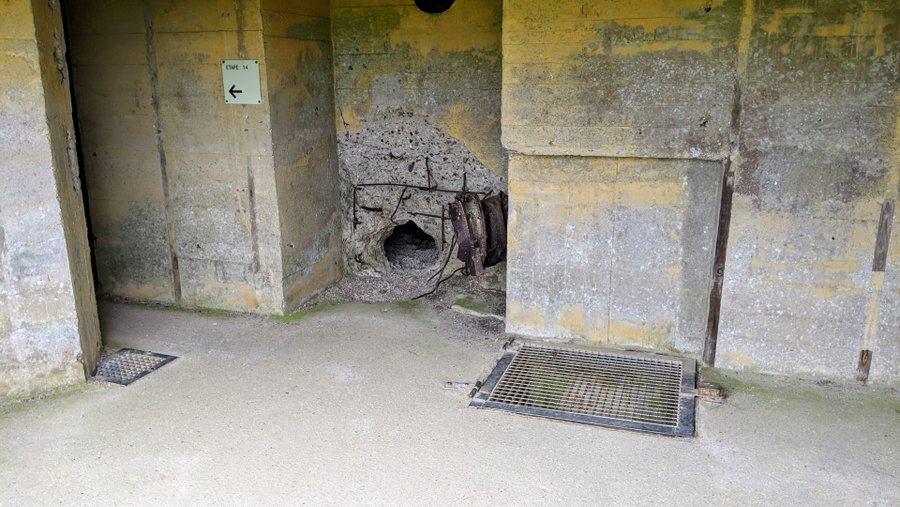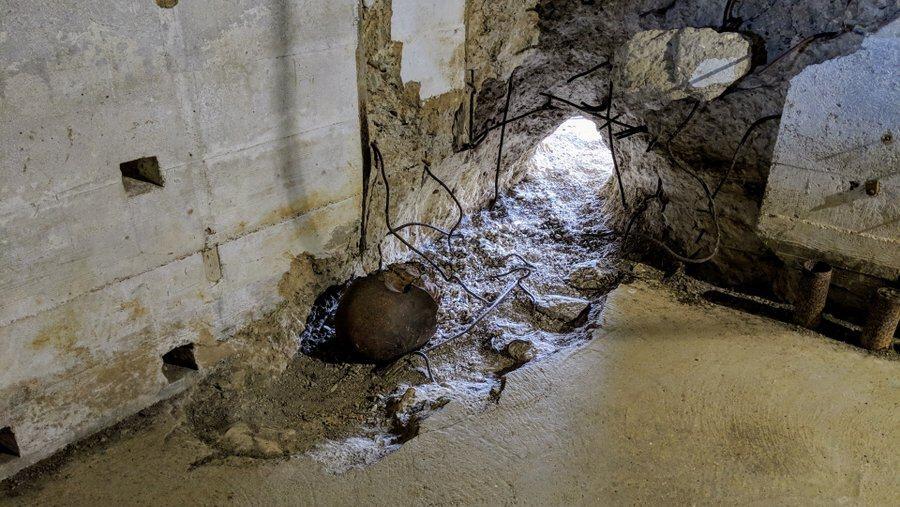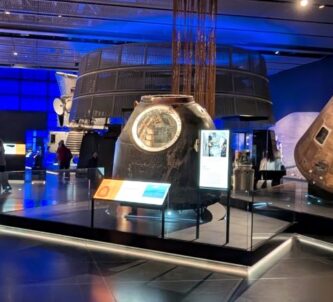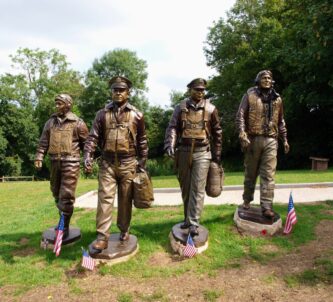The German battery at Azeville north west of Utah Beach was supposed to be taken on D-Day itself. It was still firing on Utah on the morning of D+3 (9th June).
Azeville is a little different to other batteries in Normandy in that you spend the first half of your visit in underground passages rather than on the surface or in open trenches. So I’ll admit I found it a little confusing at first, on a rainy day in April, to understand the layout.
D-Day Normandy Posts
The History
Hitler ordered the construction of what became known as the “Atlantic Wall” in Dec 1941 and work started on the Normandy coast shortly after. An open battery was established on the coast between Les Gougins and Ravenoville, but it was put out of action by a large storm in February 1942 so it was decided to build a new battery inland. A location outside the village of Azeville was chosen largely because, while hidden out of sight of the landing forces, it could cover the coast and all the German military installations from Quineville to Madeliene – where, as it turned out, the landings on Utah started. The other important thing about being 5 kilometres from the coast was that the battery could not only shell the beach but also follow and disrupt the progress of the enemy forces as they worked their way inland.
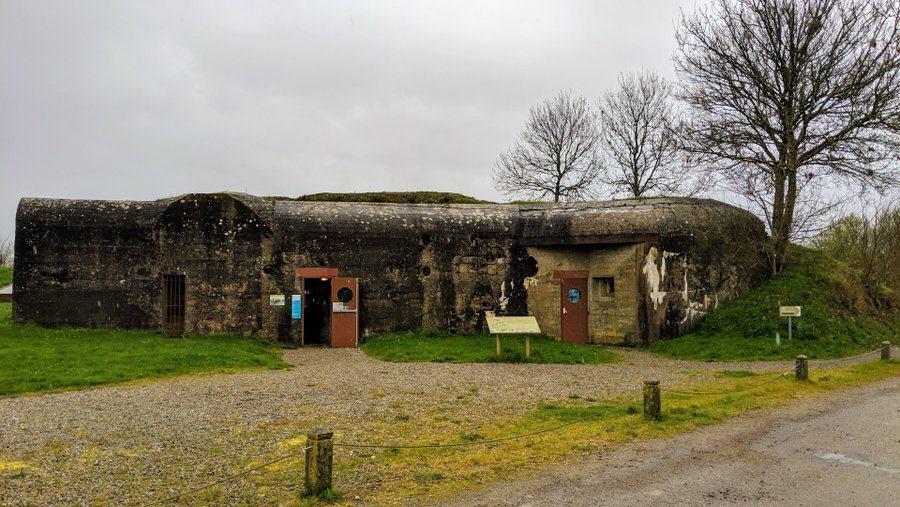
The initial phases of construction began with underground shelters to protect men and ammunition. Then the underground concrete gallery and ‘Tobruks’ to defend the site against land attacks from the West. But the works are delayed by disagreements between the army, the Todt Organization and the subcontractors. So it’s not until May 1943 that work begins on the four artillery casements. Meanwhile, work is completed on three machine gun nests, wells for water, ready rooms for the soldiers, new kitchens, latrines and stores. By Feb 1944 the four 105mm cannons are installed¹ and the angle of the embrasures of the casemates is widened from 120º to 135º so the battery can cover all parts of Utah Beach. Oh, and with the bombing in mind, a 37mm AA flak gun is mounted on the top of one of the casements and they are painted to look like typical Normandy houses and rock outcrops.
When the battery is near completion it is garrisoned by its troops, the 2nd Battery of the 1261 Army Coastal Artillery Regiment (HKAR)², who build additional earthworks and fortifications. The Azeville battery is expected to be able to resist attack for several days with its interconnected bunkers, tobruks, AA-guns, minefields, filtered air to protect against gas attack, a pharmacy, an infirmary, stores, a generator and water wells.
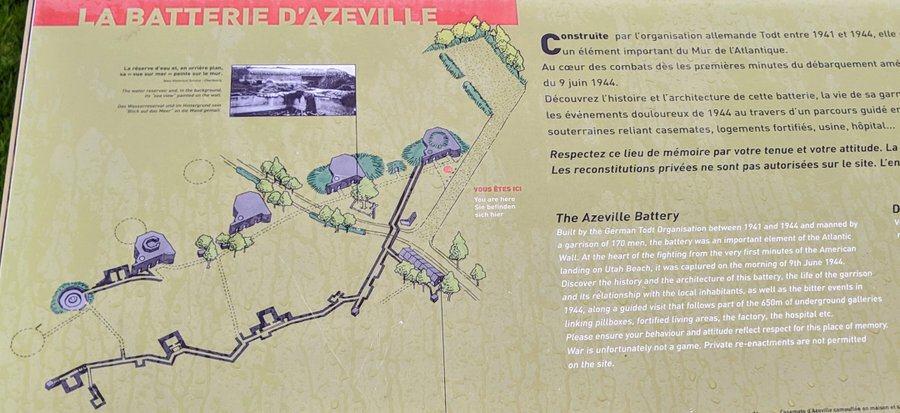
Each of the four casemates, which are numbered from south to north 344, 345, 346 & 347, is equipped with four machine gun positions, a ready room/mess equipped with folding bunks that can accommodate up to twelve soldiers, and ammunition & charge bunkers for a total of 300 rounds.
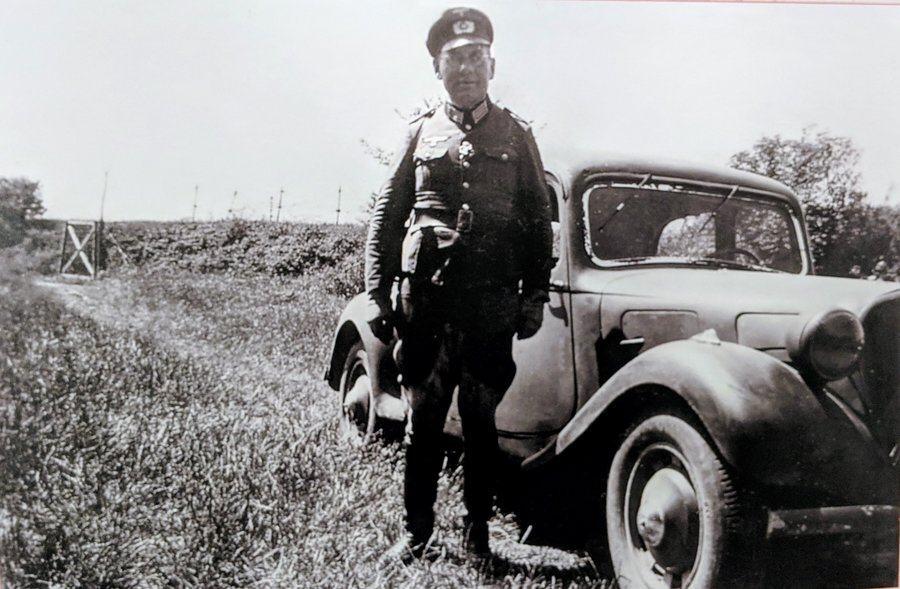
The commander of the battery is Hauptmann Dr. Hugo Treiber. Interestingly, he is usually to be found not at Azeville, but 2.7 kms away to the northeast at Crisbecq battery, where the observation/command bunker does have a view of the coast and out to sea. As a result Crisbecq handles fire control for the Azeville battery.
Visiting Azeville Battery
Of course, I didn’t know any of this when we turned up on a rainy day in April. So I was pretty confused when, after watching a short movie in the southernmost casement (No. 344) which is the entrance to the site, we set off down some steps into the 300 metres of restored tunnels. The visit is self-guided and you are equipped with an audio guide (in English) that describes the numbered locations, but I didn’t know which way I was facing or what to expect.
The tunnel is really an enclosed trench marking the western defence line for the site. At various points there are ground level apertures and half way along (in another field on the other side of the road) there’s a concrete strongpoint with a control/ready room and a ‘tobruk’ machine gun position. It was only after we emerged from the defense line tunnel at the northern end of the site near the site’s only open-air gun emplacement, that I began to get a sense of what Azeville is all about. There is another tunnel that runs immediately behind the four casements, but that isn’t open to the public.
For one thing, by comparison to other batteries in Normandy, it’s fairly intact, even though the guns themselves are missing. (At other sites like Longues-sur-Mer or Crisbecq, some of the guns remain.) The two northern casements (Nos. 347 & 346) are open to explore, but when we were there some parts of the site were closed for building work on the former mess hall³ and we couldn’t get back to the entrance (No.344) overground. We had to walk back through the underground tunnels. I didn’t get much of a chance to see casement No. 345, though I had the impression it was closed.
Unlike some batteries and defence bunkers, Azeville hasn’t been ‘dressed’ with equipment displays. There are no rooms with mannequins in German uniform manning radio sets and no display cases with personal items, weapons or foodstuffs. What you see is the battery itself, pretty much as it was when demilitarised by the Allies after the war. The tunnels and western defences, and casements have been cleaned up, illuminated and have some signage. Also, the imaginative camouflage paintwork on the casements has been restored, but that’s about it.
D-Day for the Azeville Battery
A bit like the bomb in Dark Star the Azeville battery was built for just one purpose, D-Day – even though they couldn’t know what it was called, whether it would actually happen, when it might happen, or whether it would happen on their ‘patch’! So, come the moment, how did it perform? Well, not too badly.
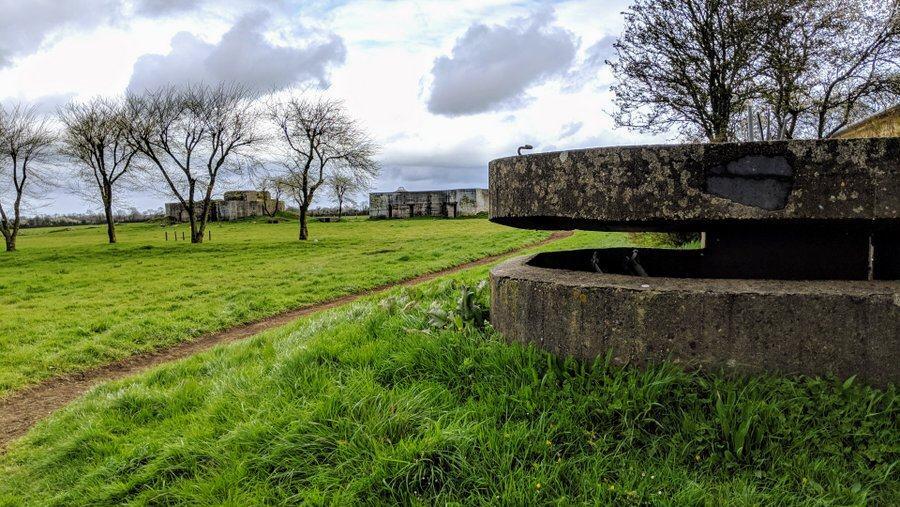
The “longest day” started around 1.30am on the 6th when the battery was bombed. Several bombs fell within the site but the garrison managed to shoot down one aircraft.
At 2:46am, some 20 paratroopers of 508th Parachute Infantry Regiment, who had been dropped in the wrong place, attacked the battery but were driven off.
At dawn (5.55am) Hauptman Treiber drove over to Crisbecq to direct fire from there. Lieutenant Kattnig is left in command.
At 06:06, the naval bombardment commences. The battleship USS Nevada hits casemate No. 347 with four shells but the gun remains operational and the battery targets a destroyer. Crisbecq had already sunk a destroyer. Azeville managed to damage several ships during the first few hours but was also damaged. Just before 7.00am, casement No. 345 is hit by two shells, killing eight gunners.
Meanwhile US forces have begun landings on Utah Beach and Azeville targets the beach at 6.28am as they land. Unfortunately for the Germans, the swift tidal current carries the landing craft a mile or so south of their intended sector, putting them right at the extremity of the battery’s range, limiting the accuracy. It is also almost at the physical edge of the guns’ traverse. Up against the embrasure’s edge, the guns can’t target troops moving inland. That’s just as well for the Americans because they are encountering more resistance than expected, and they had intended to capture the Crisbecq & Azeville batteries in the afternoon of D-Day.
So it’s not until the morning of 7th June that Azeville is attacked by American infantry, supported by tanks. They get within 100 yds of the southern casements but are driven back by a counter-attack.
At 1.00pm, casement No. 347 is hit by a pair of 14 inch shells from the USS Nevada. One explodes on the SE corner. The other flies in through the embrasure, crashes through the back wall into the ready room, fails to explode and passes back outside through the next wall. Some reports say the shock wave killed all fifteen men in the ready room, others say there were five men killed. Either way it put the casement out of action, and you can still see the holes it made today.
During the night of 7-8 June, the Americans try to assault the site from Azeville village at the back (west) of the site, but the Germans keep illuminating them with flares and the machine guns in the tobruk strongpoint fire at anything that moves. Meanwhile Crisbecq is also under attack and by early morning is about to fall into the hands of the enemy. Hauptmann Treiber orders his battery (Azeville) to open fire on his own location (Crisbecq) forcing the attacking troops to retire.
On 8 June, the US 4th Infantry Division renews its attempt to capture the village and the battery, but is repulsed with heavy casualties on both sides.
Around 8.00am the following morning (9 June), the Azeville battery comes under fire from US tanks and artillery and the middle two casements (Nos. 345 & 346) are put out of action. The preliminary bombardment is followed up with an attack by the 1st and 2nd Battalions of the 22nd Infantry Regiment who bring in demolition teams to blow up casement No. 344. This time Lieutenant Kattnig calls in covering fire from Crisbecq to dislodge the Americans.
Around 2.00pm the Americans attack again. After an intensive bombardment by the artillery, the site is attacked by tanks and bazookas. In the end a flamethrower is used on the last casement (No. 344), exploding its depleted stock of ammunition. Lieutenant Kattnig and his surviving men surrendered the battery at 2.30pm.
¹ There’s a bit of a rush. Spurred on the the Allies’ bombing campaign, the guns are installed in their casemates before the concrete is completely dried.
² The Azeville battery is garrisoned by up to 173 men. The average age of the soldiers in 1944 is 34 years old. On D-Day the oldest is 54 yrs old, the youngest is 19. At the time of their enlistment, 66 soldiers come from the regions of Baden and Württemberg; 14 soldiers are from Silesia; 12 men from Saxony; 8 from Lower Saxony; 10 from Bavaria; 8 East Prussia; 8 soldiers from Iran; 6 Mecklenburg and Pomerania. 13 men come from various parts of Germany, including Thuringia, Saarland, Brandenburg and Hamburg. 17 soldiers, about 10% of the battery, come from regions annexed by Germany after 1938: 7 from Austria, 6 from formerly Czechoslovak territories (including 4 Sudeten Germans); 2 of Alsace and 2 of Warthe, a former Polish territory. Finally, 2 battery men are among the 2,000 German-speaking Swiss who have chosen to join the German army.
³ The battery had a wooden hall by the side of the road that runs through the site. The “Kasino” was used for entertainment & celebrations. It had a small stage, two pianos and seating for 50. The current owners of the site are re-building a replica Kasino.
Declaration: I was on a self-driving press trip as a guest of the Normandy tourist office. Entry to the battery site was complementary.
Factbox
Website:
Batterie d’Azeville
Getting there:
Batterie d’Azeville
La Rue – 50310 Azeville
France
The Crisbecq Battery is not far away from Azeville, so it’s a good opportunity to see both sites..
Entry Price:
| Adult | € 7.00 |
| Child (7 – 18) | € 3.50 |
| Family Pass (2 adults + 3 children) | € 21.00 |
| Concessions (Students, unemployed, handicapped) | € 5.50 |
| School Groups (per person) | € 2.50 |
| Adult groups (per person – Minimum 15) | € 4.00 |
Opening Hours:
| 01 April – 31 May (Closed 1st May) | 10:00 – 18:00 |
| June, July & August | 10:00 – 19:00 |
| 01 September – 08 November | 13:00 – 18:00 |
Last entry 1hr before closing

